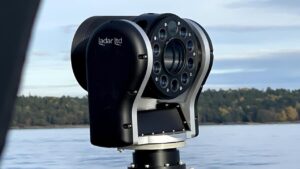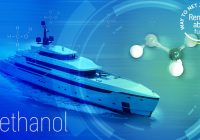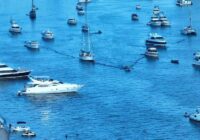UK-based sensor technology innovator Ladar Ltd is seeking private funding to finalise the security and defence capabilities of its Ladar™ Sensor Suite platform as EU-funded development project draws to a close.

Ladar Ltd’s portable hybrid detection unit
Ladar Ltd’s portable hybrid detection unit features a combination of digital cameras, thermal cameras, and light detection and ranging (LiDAR) laser diodes whose sensor data is fused to generate a highly accurate image of the vessel or floating infrastructure surroundings (also called situational awareness). The system works in limited visibility and adverse sea conditions for the ocean surface level, as well as above and below the water column. The unique fusion sensor technology was first conceived in an earlier research project for on-the-surface detection and has evolved into the latest prototypes developed in-house as part of the EU-funded MARINA project.
AI/machine learning backbone
AI and machine learning algorithms use combined sensor data to accurately find, classify, and track targets (on and above the surface, semi-submerged and submerged) in the ocean surface layer up to a depth of six metres. Data is displayed on a user-friendly graphical interface both onboard and transmitted to control centres onshore if required, and can be complemented by other types of sensors to get a full picture of the water column and above the surface.
Highly versatile tool
The smart platform’s core applications include providing ‘near proximity’ situational awareness supplemented by visual and audible warnings for collision avoidance (to support navigators in informed decision-making on the bridge, i.e., navigational safety); enabling environmental protection (for example, monitoring of marine mammals/whales in environmentally sensitive and protected areas); and providing security/defence surveillance. The compact unit has a small footprint of less than 0.5 meters and can be mounted on any type of vessel or floating/fixed infrastructure.
‘No one else has the technology’
In terms of security threats, Ladar Ltd’s focus is on what it calls the ‘detection gap’. Currently, the best available technology for primary navigational aid used at sea is the Radar, which can accurately detect targets above the water surface at distances over 1 nautical mile (nm). “But as of today, there is no near-detection capability on the surface or in the surface layer and below. Ladar™ Sensor Suite is a meaningful change in this space and we aim to be the best available technology to cover this detection gap for objects at the ocean surface and semi-submerged,” says Ladar Ltd CEO Captain Jorgen Grindevoll.

Ladar Ltd CEO Captain Jorgen Grindevoll
Security protection and defence applications
Installed on land for security and surveillance purposes, the unit can be used to detect manned, remote operated or autonomous underwater vessels (AUVs) approaching, for example, port entrances and harbour areas, as well as to identify threats to refineries, LNG/Energy terminals and other critical infrastructure, alerting Coast Guards and/or Maritime Police to activate timely countermeasures. It can also be deployed onboard unmanned vessels, on patrol boats or the energy infrastructure itself, to scan and monitor safety and security zones surrounding offshore wind farms, offshore energy platforms, and high-risk vessels in port including floating storage and regasification units (FSRUs).
“When the security and surveillance features are fully developed and commercialized, the system is an effective, autonomous and cost-effective way to lower the need for manned guard vessels around port and energy infrastructure,” says Grindevoll.
Also on the defence front, the unit can be used to detect threats including semi-submerged drones, sea mines (for example the current situation in the Black Sea where sea mines are posing a very real danger to shipping), and even divers with malicious intent. “As we see today in attack reports, and in the news from areas of conflict, what is today used to attack a target at sea and in port is likely to be operating in the surface layer,” Grindevoll adds.
Europe puts spotlight on security
In view of such risks, Ladar™ Sensor Suite fits very neatly into the Revised Maritime Security strategy just released by the European Commission, which outlines the strategic aims to increase maritime monitoring and surveillance of critical maritime infrastructure in all coastal and port areas of the EU. “We see our platform closing the detection gap as part of this effort at a time of increasing geopolitical uncertainty,” says Grindevoll.
‘Strong market demand’
The MARINA project ends at the end of November 2023. The last three years have been spent focusing on the prototype for collision avoidance and detection in the surface layer, which is right now being tested in the Mediterranean.
“Our Ladar technology is protected with patents in several countries and continents. Given the strong market demand we are looking for a private partner or partners to invest in developing the security and defence features and to take our technology to the next level, to play in a different league in the security domain,” says Grindevoll.
He adds that Ladar Ltd is seeking funding of EUR 3.5 million. “This is an exciting opportunity for an investment with a direct and well-documented need. I invite interested parties, whether energy, sensor tech, or defence-related, to reach out to me so we can discuss our objectives in further detail.”







